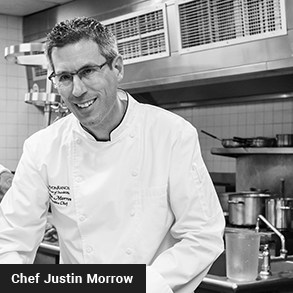Here’s the gist: At retail, sales of fresh grassfed beef have doubled every year from 2012 to 2016, even as overall beef sales have dropped. Not to mention that over 50% of hotel restaurants now have grassfed beef dishes on their menus and this is growing.
Whether the reason is avoidance of added hormones and antibiotics, or an active pursuit of natural, sustainable or humane choices, the demand from guests is real. Many chefs just want to have a “full spectrum” of top-quality beef on the menu, from wagyu to grassfed.
“Serving Aussie grassfed beef allows us to have variety and offer something beyond the standard corn-fed product. And most importantly, it’s delicious!” –Andy Arndt, Executive Chef, Newport Beach Marriott
Hotel & Spa
For some, the health and animal welfare attributes are part of the draw.
 “We are a health and wellness resort, so we use grassfed beef exclusively. It is lower in saturated fat and higher in omegas and CLA. Overall, it’s just a much better choice for our guests and for the quality of life of the cattle.”
“We are a health and wellness resort, so we use grassfed beef exclusively. It is lower in saturated fat and higher in omegas and CLA. Overall, it’s just a much better choice for our guests and for the quality of life of the cattle.”
–Justin Morrow, Executive Chef, Canyon Ranch Resorts
One challenge many chefs are discovering with sourcing grassfed beef is that traditional grading methods like USDA prime/select/choice don’t apply to grassfed beef. Due to its naturally lean nature, high-quality cuts that eat very well don’t fit the criteria for traditional marbling-based scoring. Australia’s MSA grading system is the answer. It’s a system designed with consumer taste and preference in mind to deliver quality and consistency in grassfed products at volume for foodservice. “We spec an MSA-graded product to have that level of quality assurance,” said Newport Beach Marriott Resort & Spa Executive Chef Andy Arndt. “It’s crucial to know that what we’re serving will be up to our quality standards from one week to the next.”
Both chefs agreed about a key learning in working with grassfed beef – since it’s naturally lean, it cooks much more quickly – so don’t overcook it!
For more tips on cooking grassfed beef and recipes for high-volume foodservice, visit www.trueaussiebeefandlamb.com.

